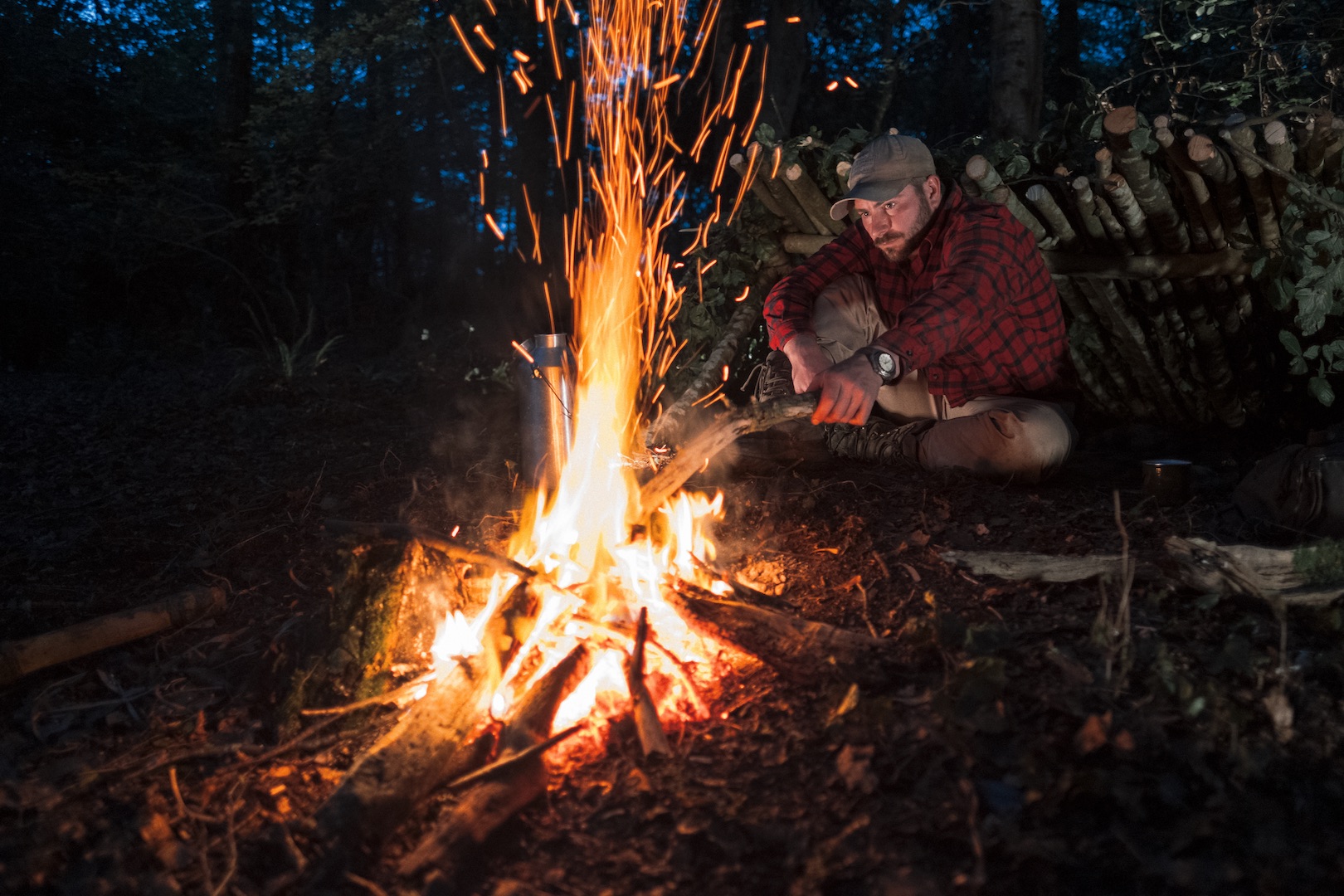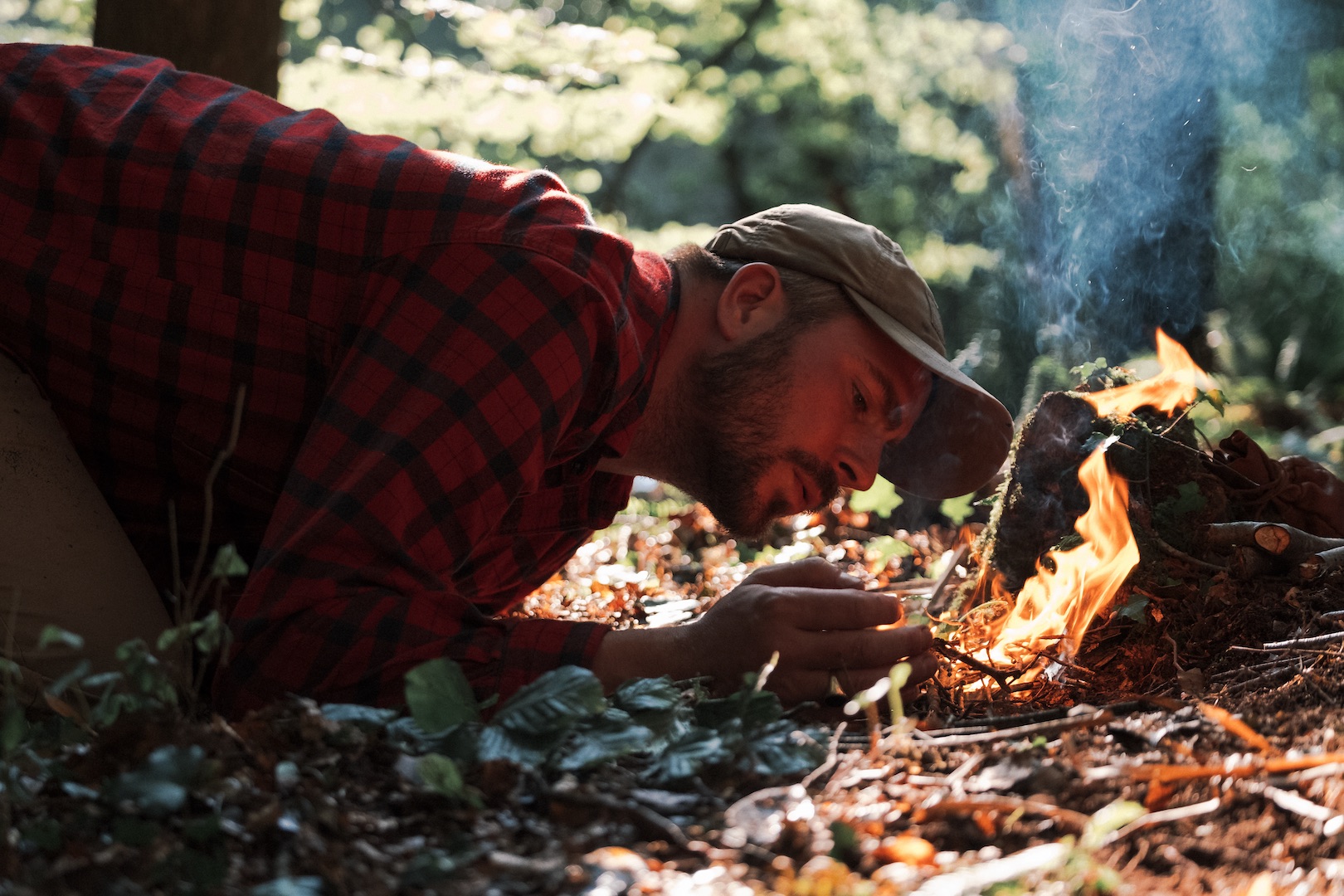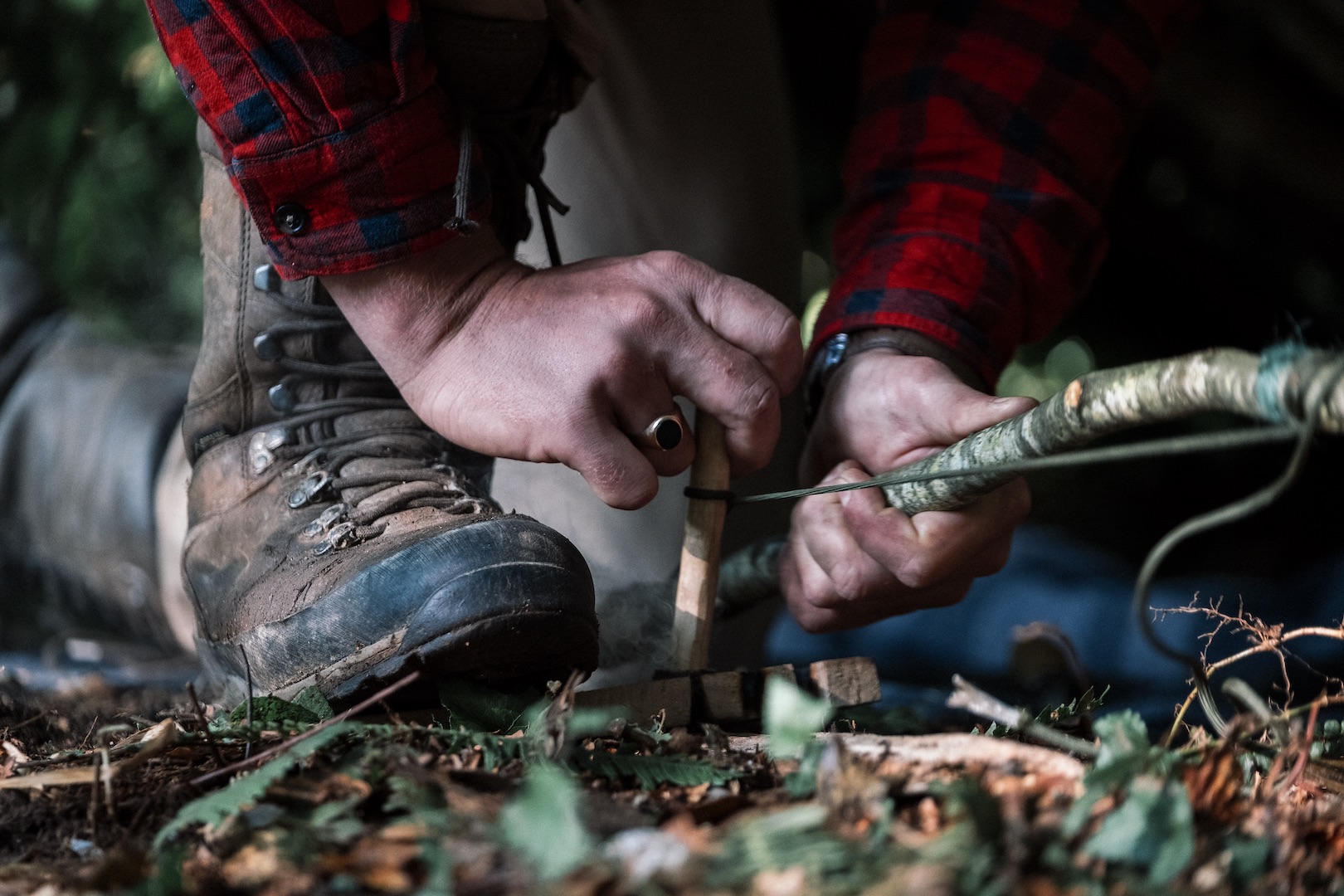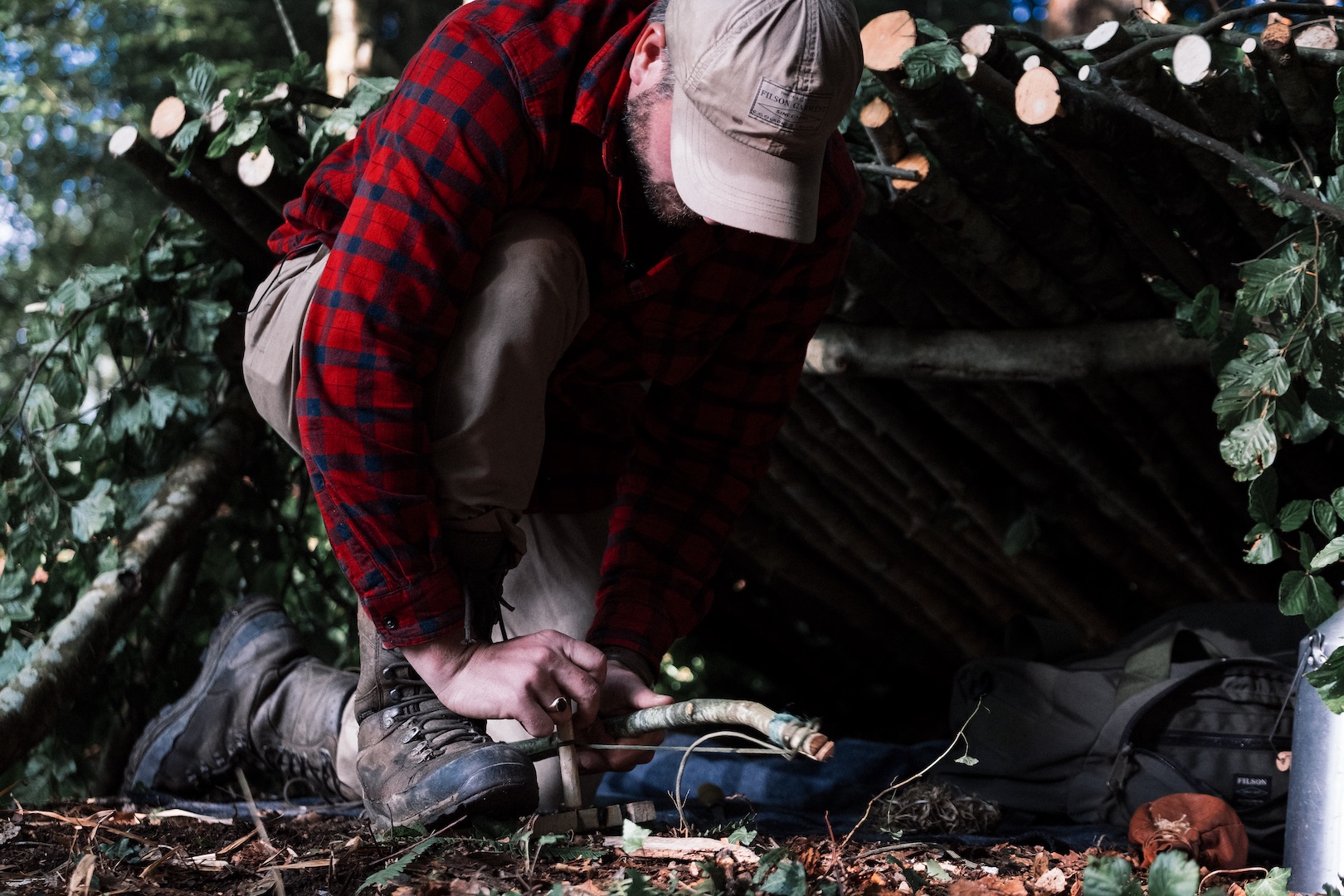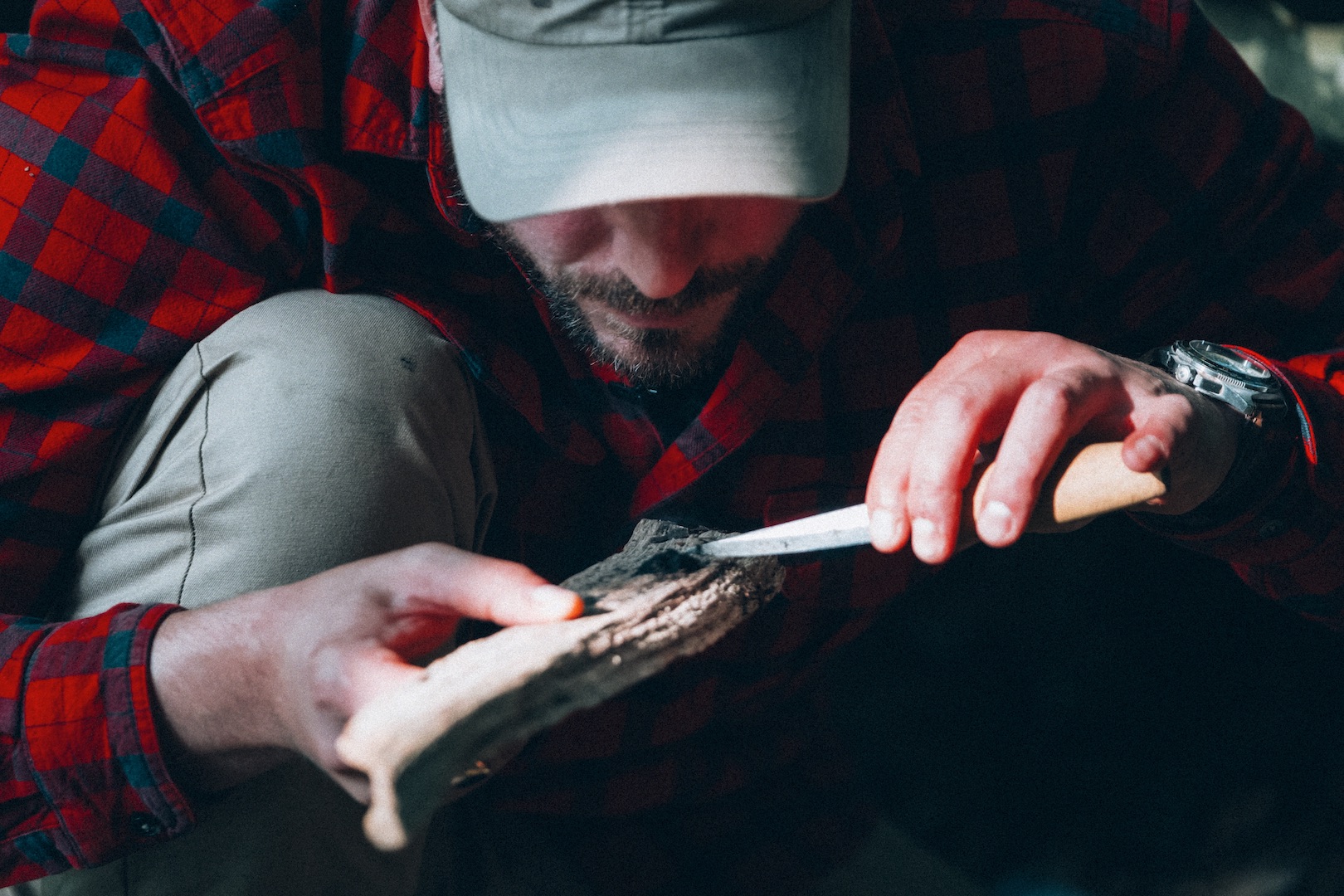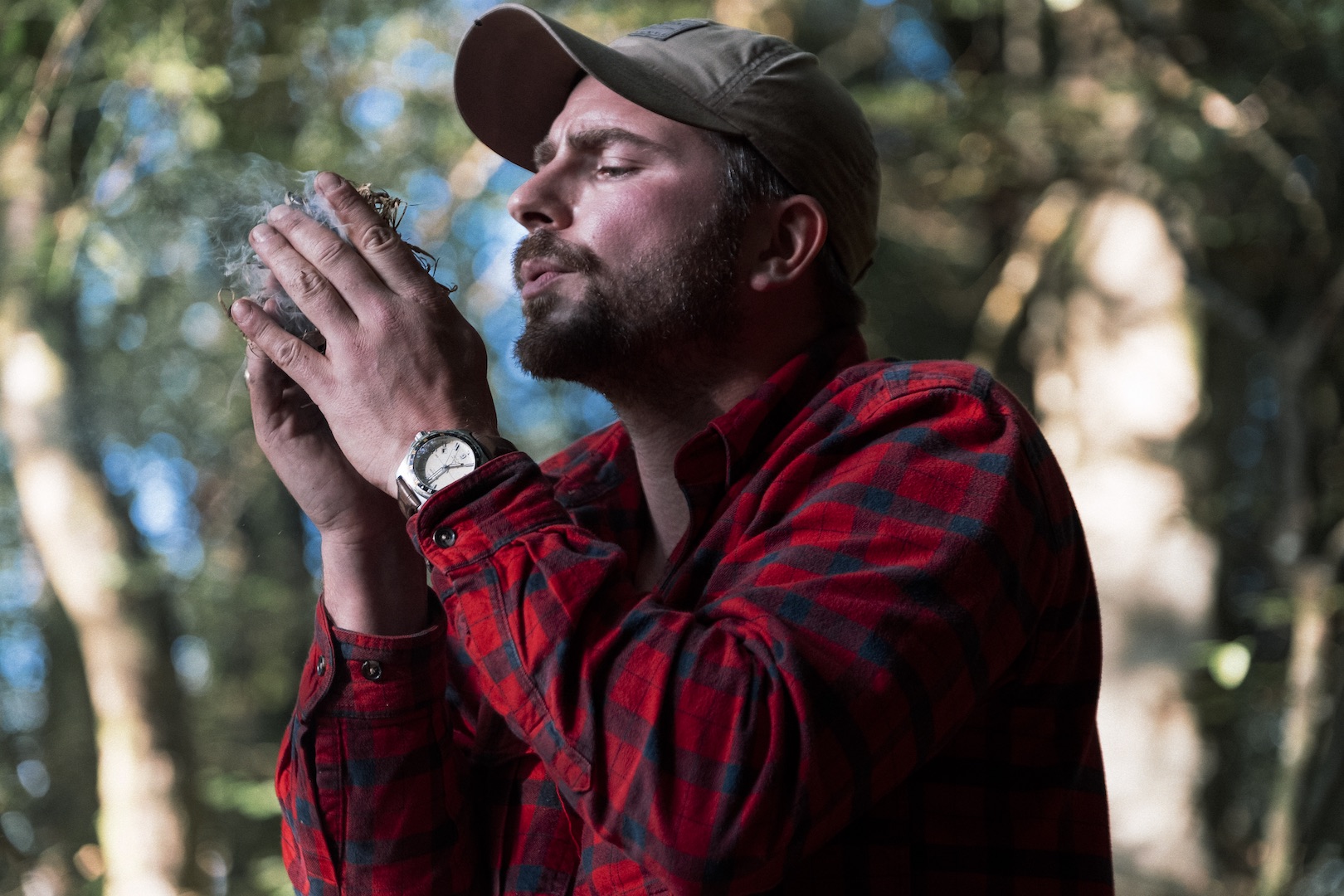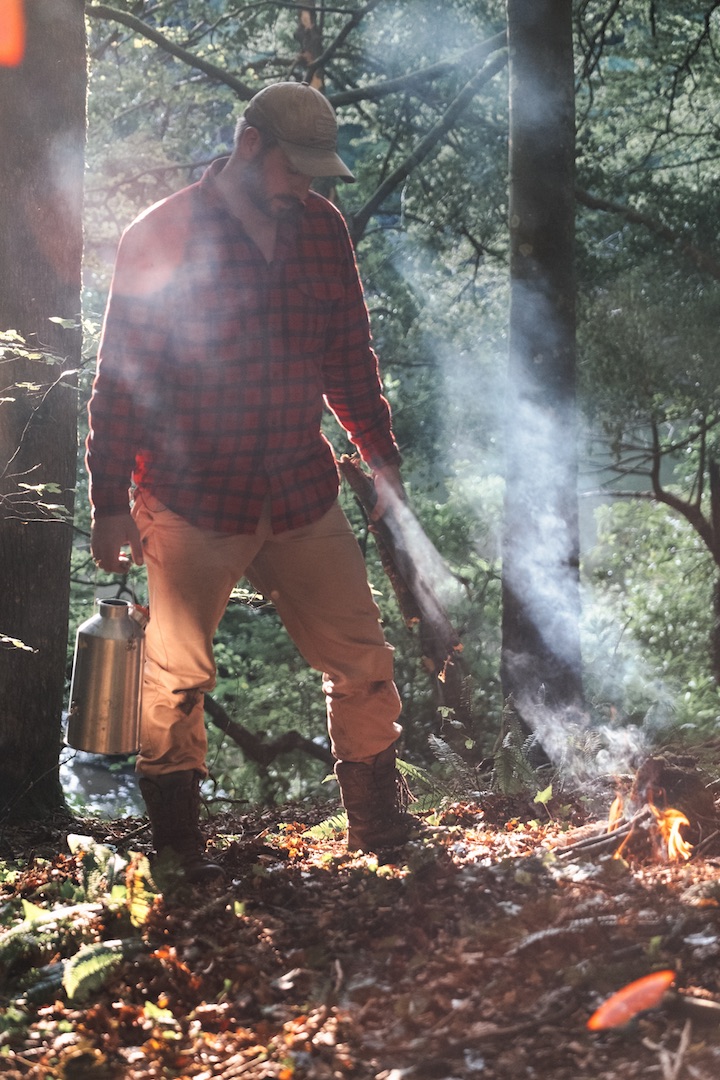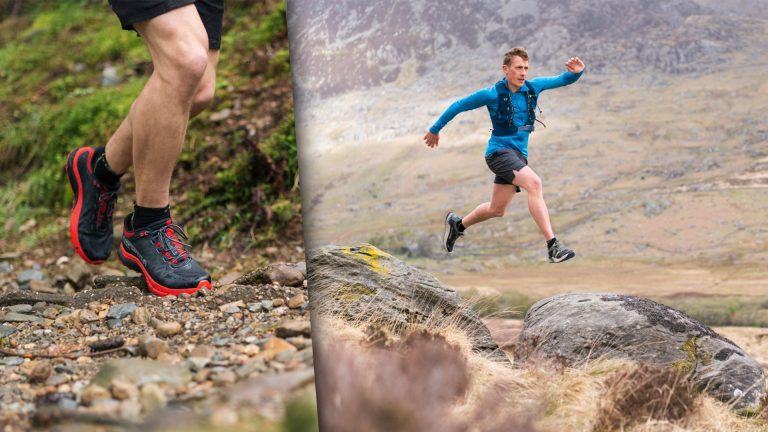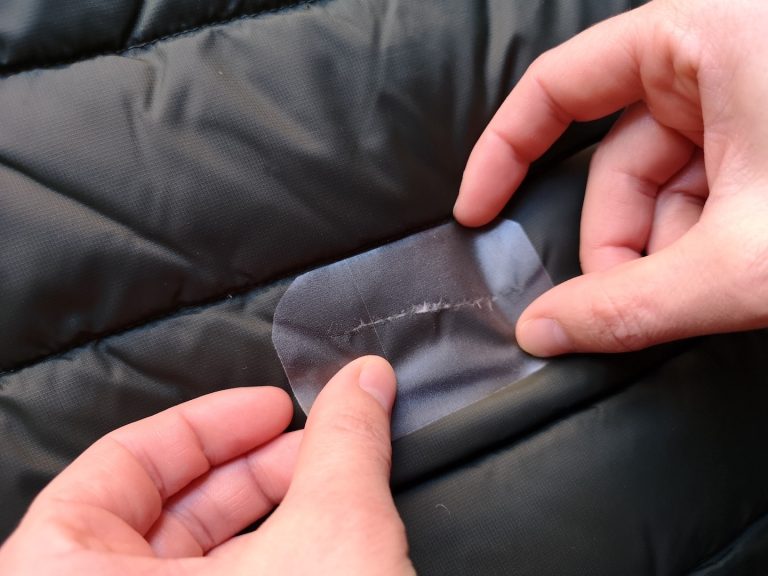Bow drill fire lighting has been practiced since the beginning of human civilisation and today it’s still a valuable skill to have in your quiver. While it might come in handy should things go horribly wrong and you find yourself in a disaster situation, or accepted onto a reality TV survival show, the real worth in it is in the primal reconnection it brings.
As part of our recent collaboration with leading outfitter and manufacturer, Filson, we’re highlighting some of the old ways and crafts that bring us back to basics. Here in Part One, with the help of bushcraft guide Thom Hunt, we look at this ancient method of fire lighting.
A Step By Step Guide to Lighting A Fire With A Bow Drill
“To poke a wood fire is more solid enjoyment than almost anything else in the world.” Those are the words of 19th century American writer Charles Dudley Warner. We’d argue there’s even more enjoyment if you’ve created that fire yourself and without the help of modern luxuries…
The Best Wood For a Bow Drill
There are a few components you need for a bow drill fire. As well as the bow, there’s the spindle (aka drill piece), the hearth (aka base board) and then the bearing block. You also obviously need fuel, starting with tinder and kindling and building up to logs.
For your fuel, and for your bow drill equipment as well, look for wood that’s dead and dry. Fallen trees and branches that aren’t touching the ground are what you need here. Just make sure nothing’s rotten.

